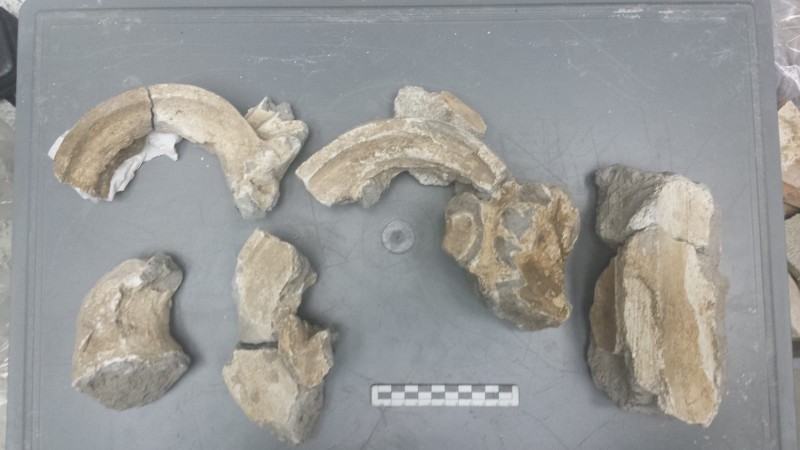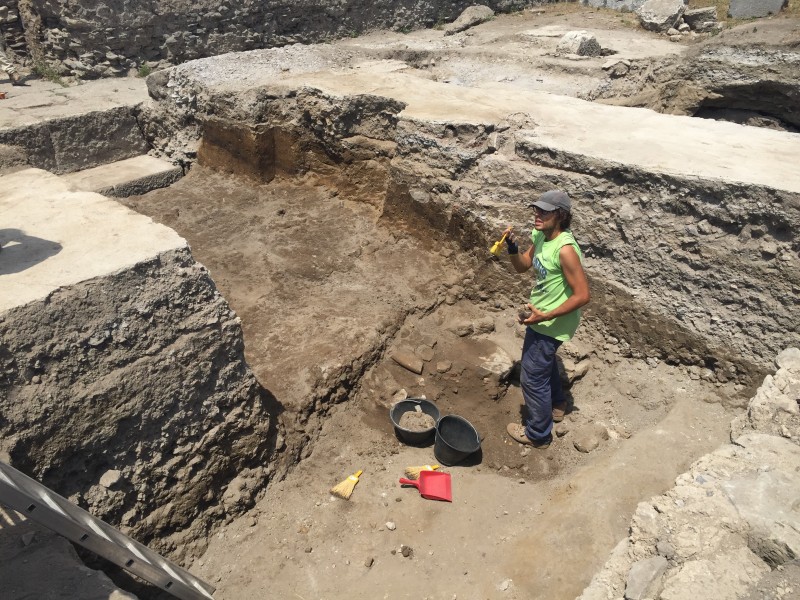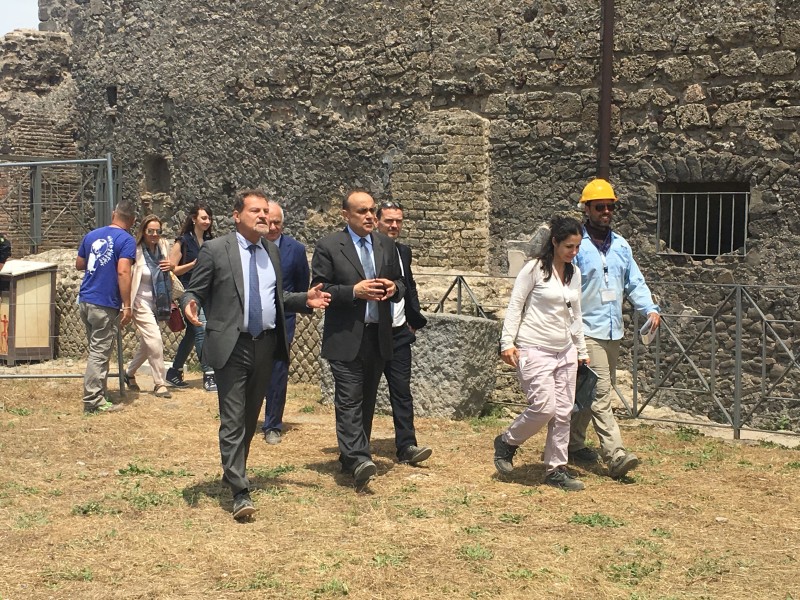June 18, 2018





Week 3 (June 4-8) has seen great progress on all fronts.
In Trench II SW (the new extension of Trench II S) we excavated below the finished mortar floor of the open court dating to the Augustan/Julio-Claudian phase. We exposed a series of leveling layers mostly composed of building debris, fragments of plaster, and soil, which are sealed by a beaten surface on top of which are clear traces of activity, including burnt areas and a series of oval pits (fig. 1). The fill of one of these cavities (SU 2961) has revealed remains of stuccoed architectural ornaments of Nocera tuff (e.g., Italo-Corinthian capitals, column drums; fig. 2). In all likelihood they originally belonged to the old decoration of the temple and/or side porticoes. We are left wondering whether they were intentionally deposited during the major upheaval of the sanctuary, when the previous tuff elements were replaced with marble.
Next, we removed the construction fills relating to the first monumental sanctuary and finally reached the Pre-Roman levels (fig.3). This phase of the work will allow us to better define the nature and extent of a tile structure previously documented at the bottom of Trench II S (partly visible in fig. 3), and to connect those remains with the cocciopesto floors found in Trench II N, where the photogrammetric survey work has been completed.
For a project brought to conclusion, another one was started: Trench B was opened in the area of the E portico (fig. 4), with the goal of sampling the stratigraphic sequence from within one of the rooms that opened onto the side colonnade (the latter was investigated last year in Trench A). With the new sondage, we hope to clarify in particular the nature of a feature built into the foundation of the N-S party wall, which was initially interpreted as a putlog hole, to confirm the chronology of the construction fills, and to verify the eventual presence of structures predating the portico.
Meanwhile, we welcomed new friends and colleagues on site, including Prof. Antonella Coralini and her students from the University of Bologna, and a group of architects from the Scuola di Specializzazione in Beni Architettonici e del Paesaggio of the University of Naples “Federico II” (with whom we will collaborate on a conservation project). We also received the surprise visit of Mr. Alberto Bonisoli, Italy’s newly appointed Minister for Cultural Heritage, who was on an official tour of Pompeii with Prof. Massimo Osanna (fig. 5)